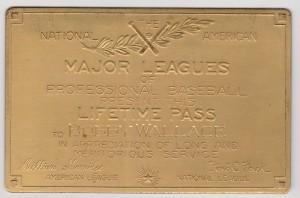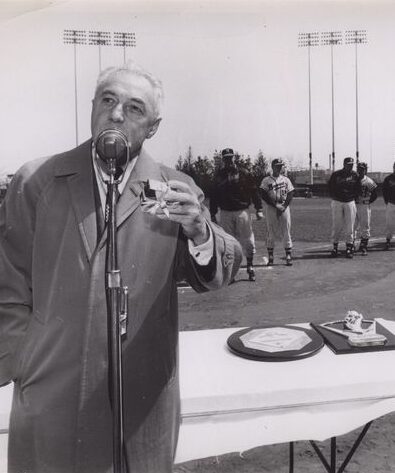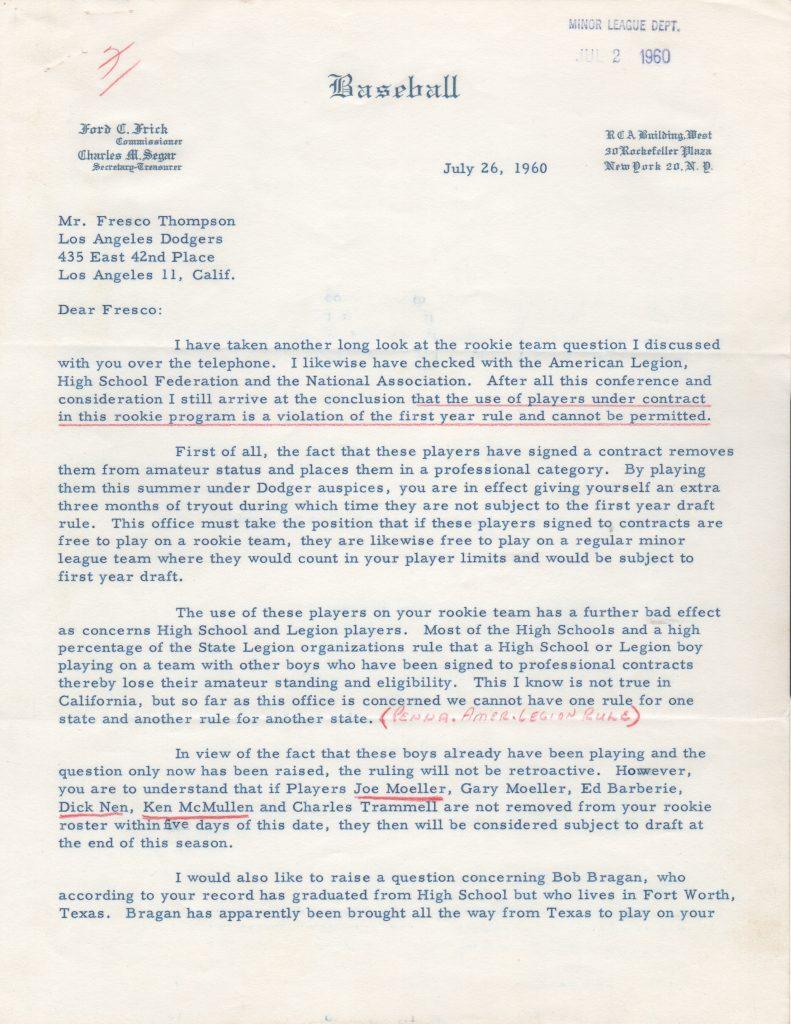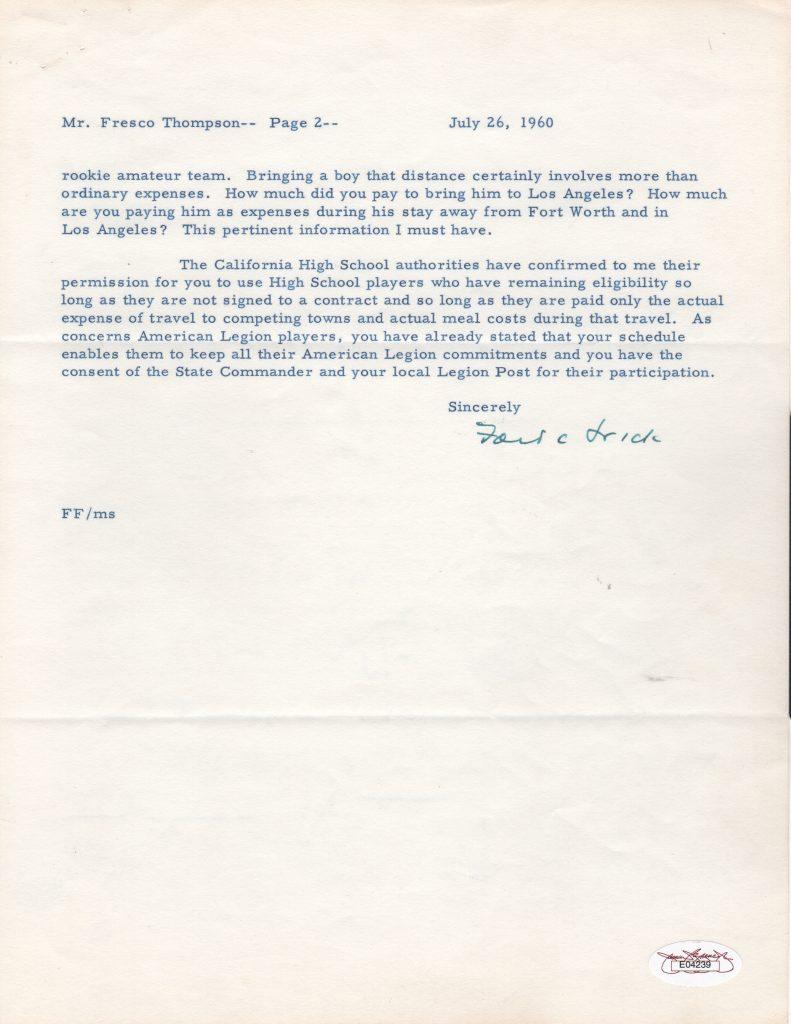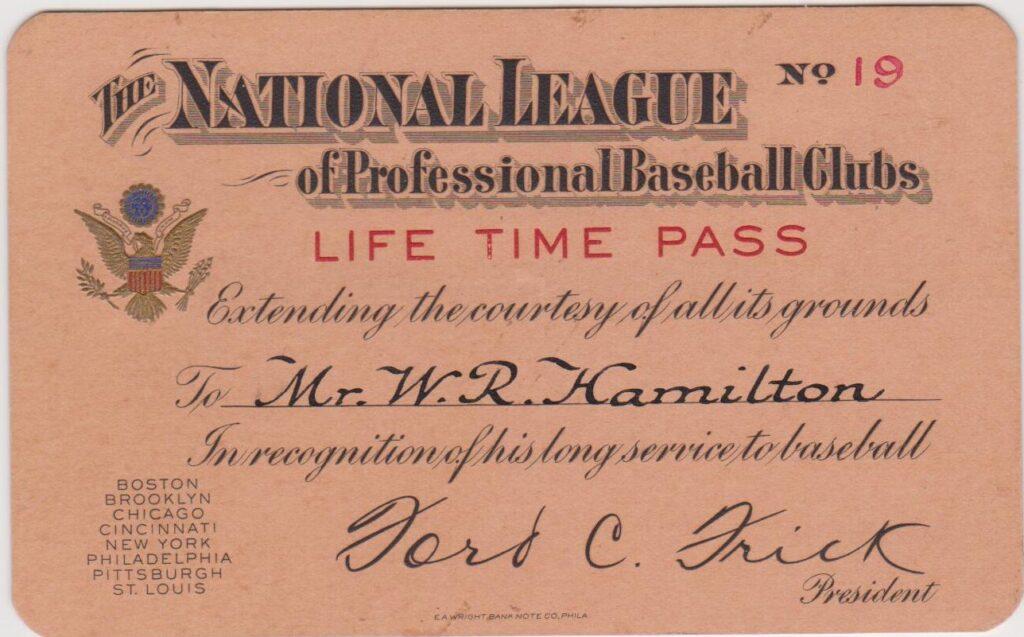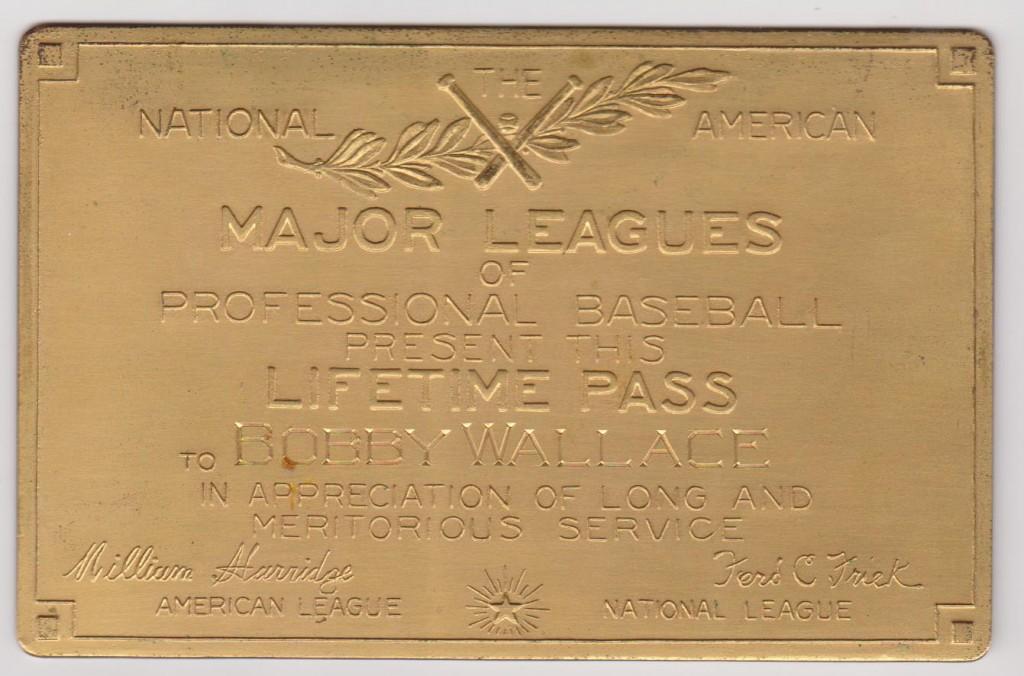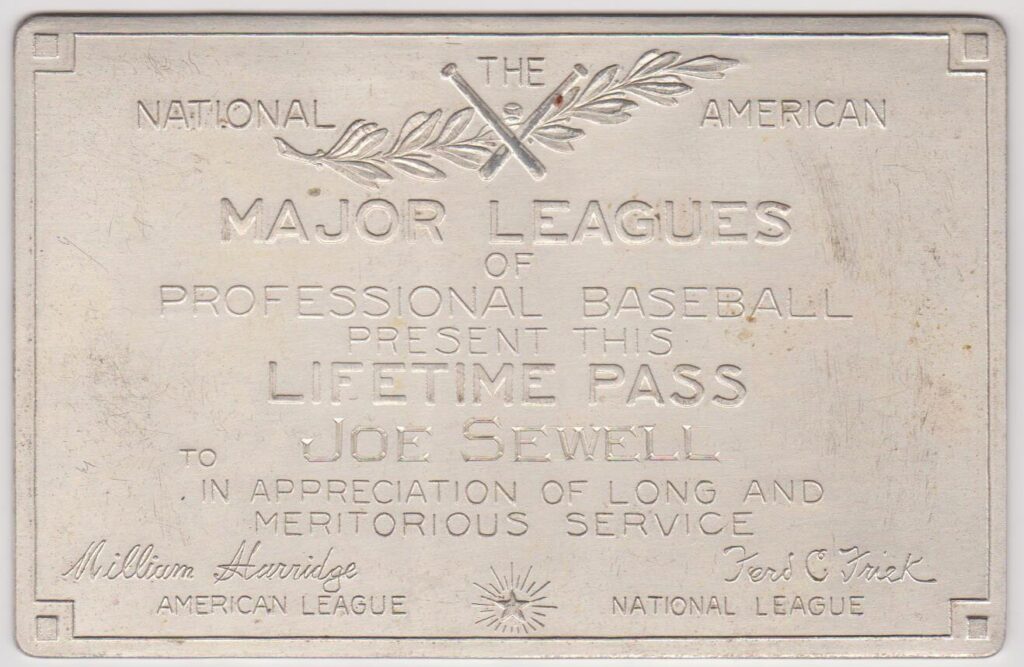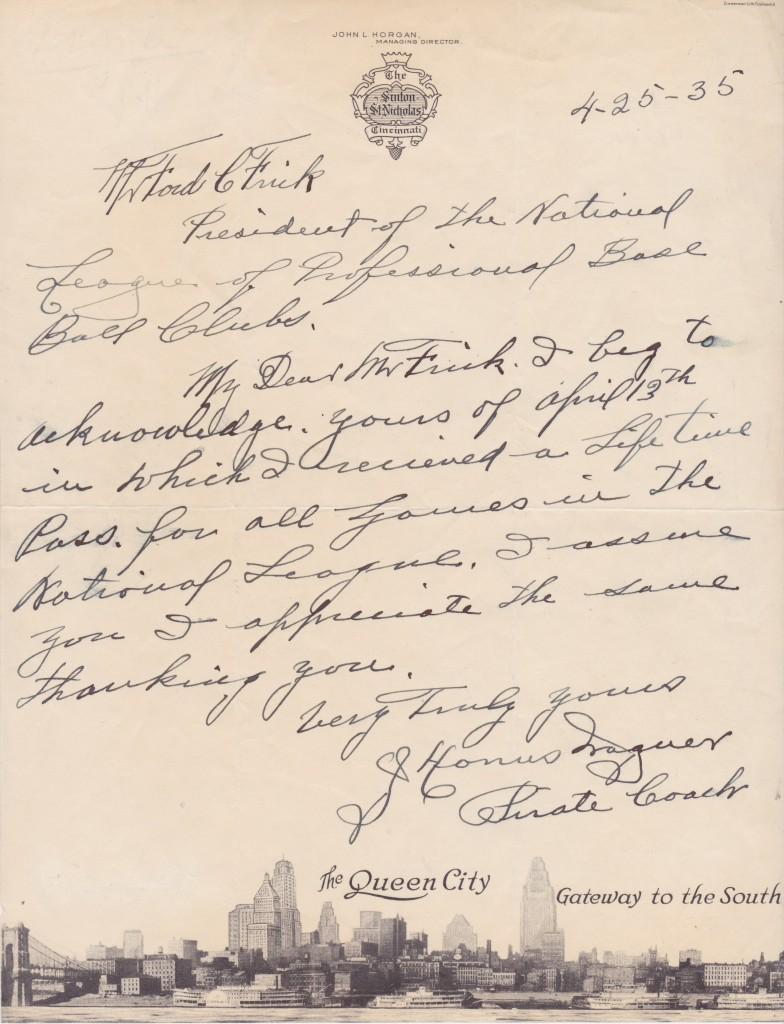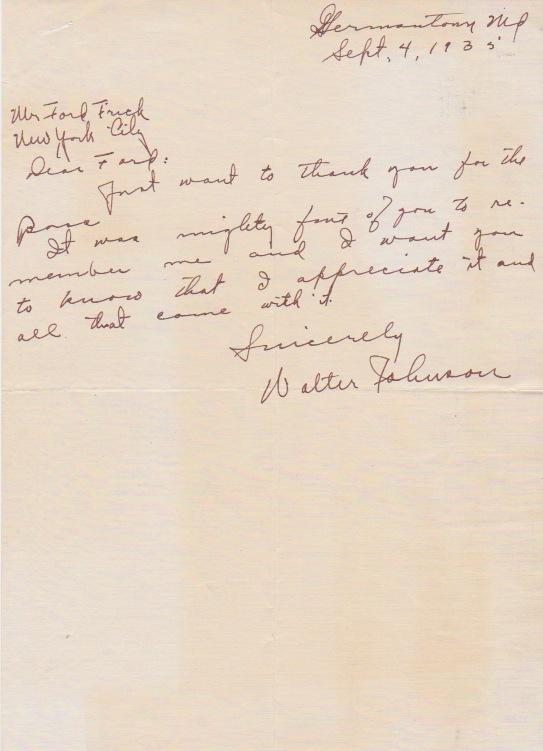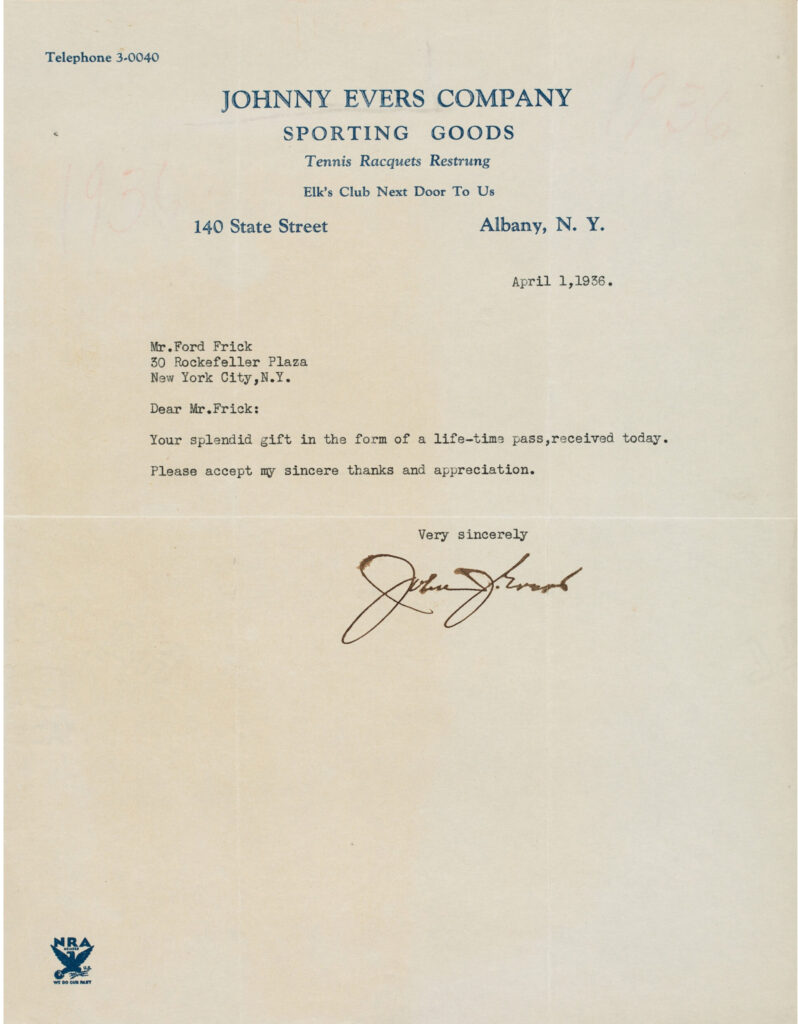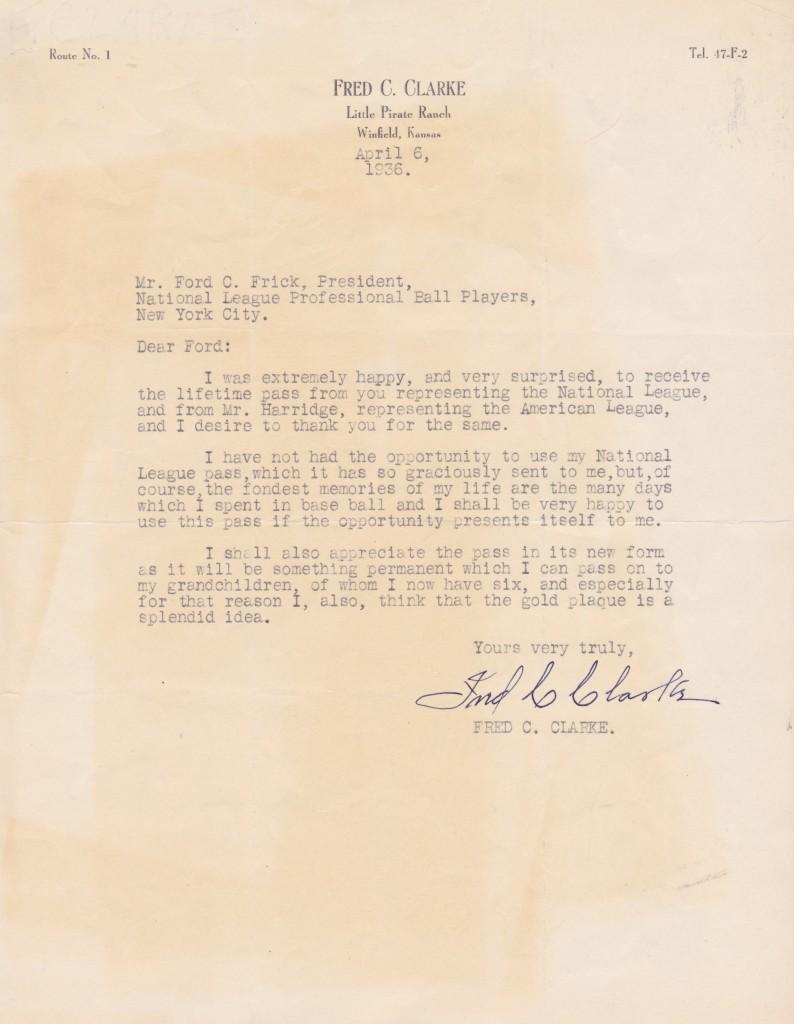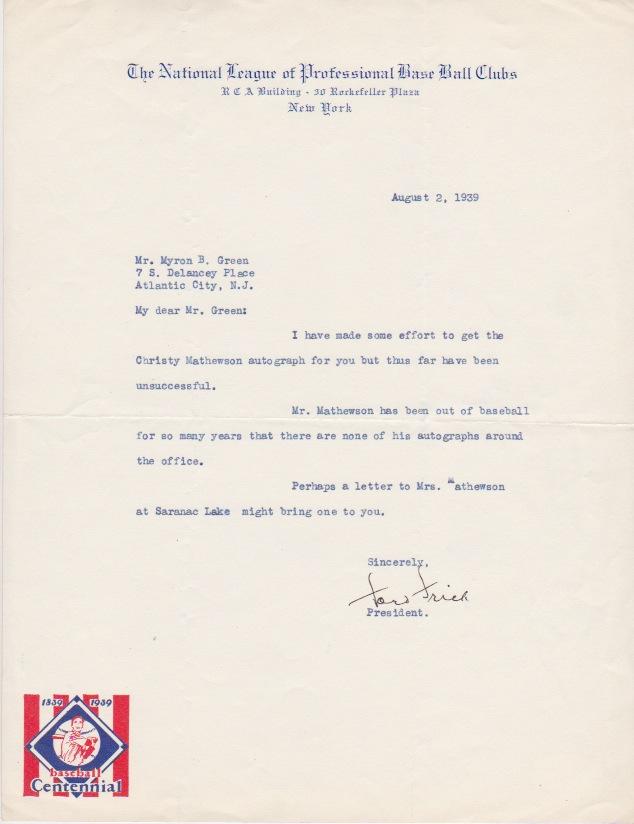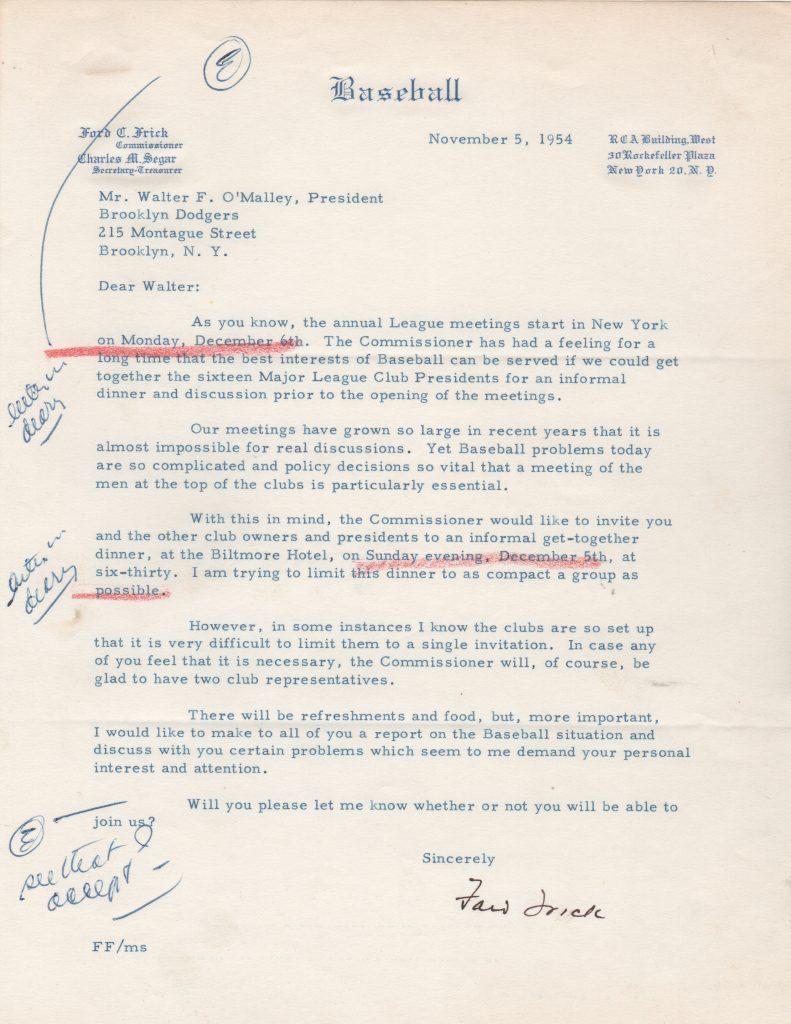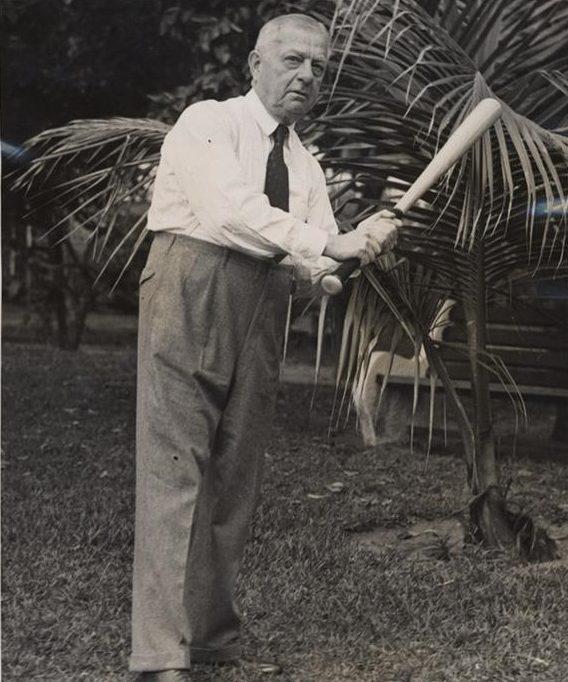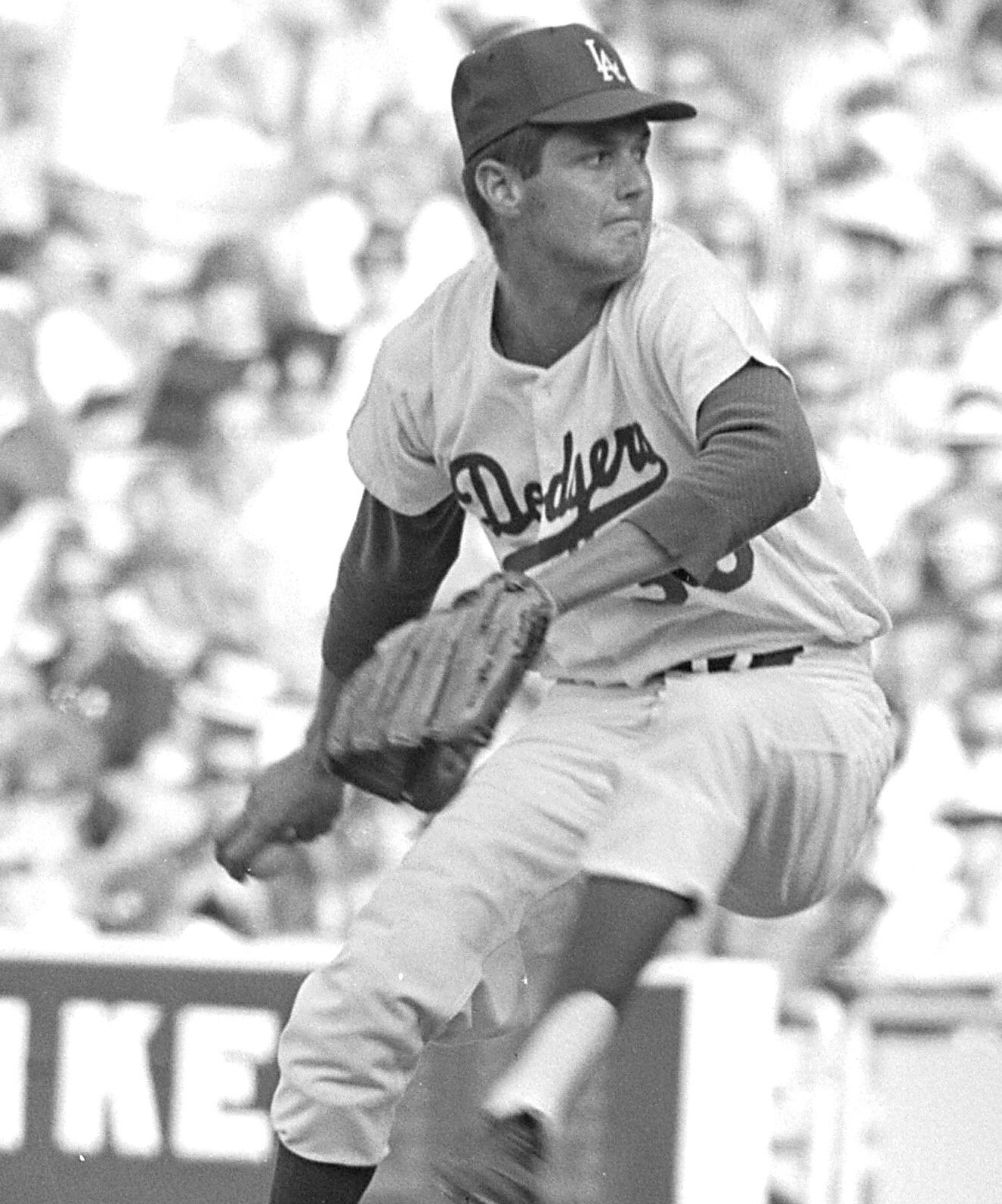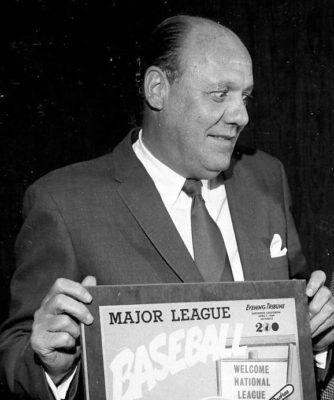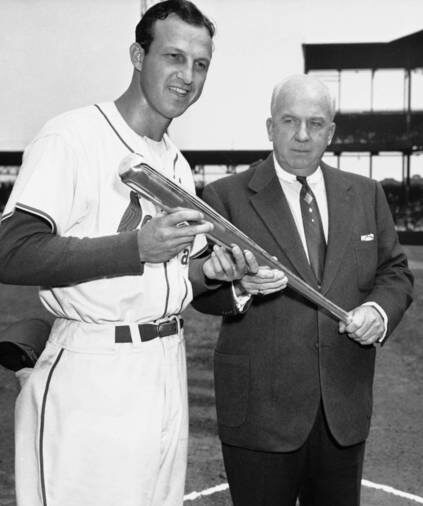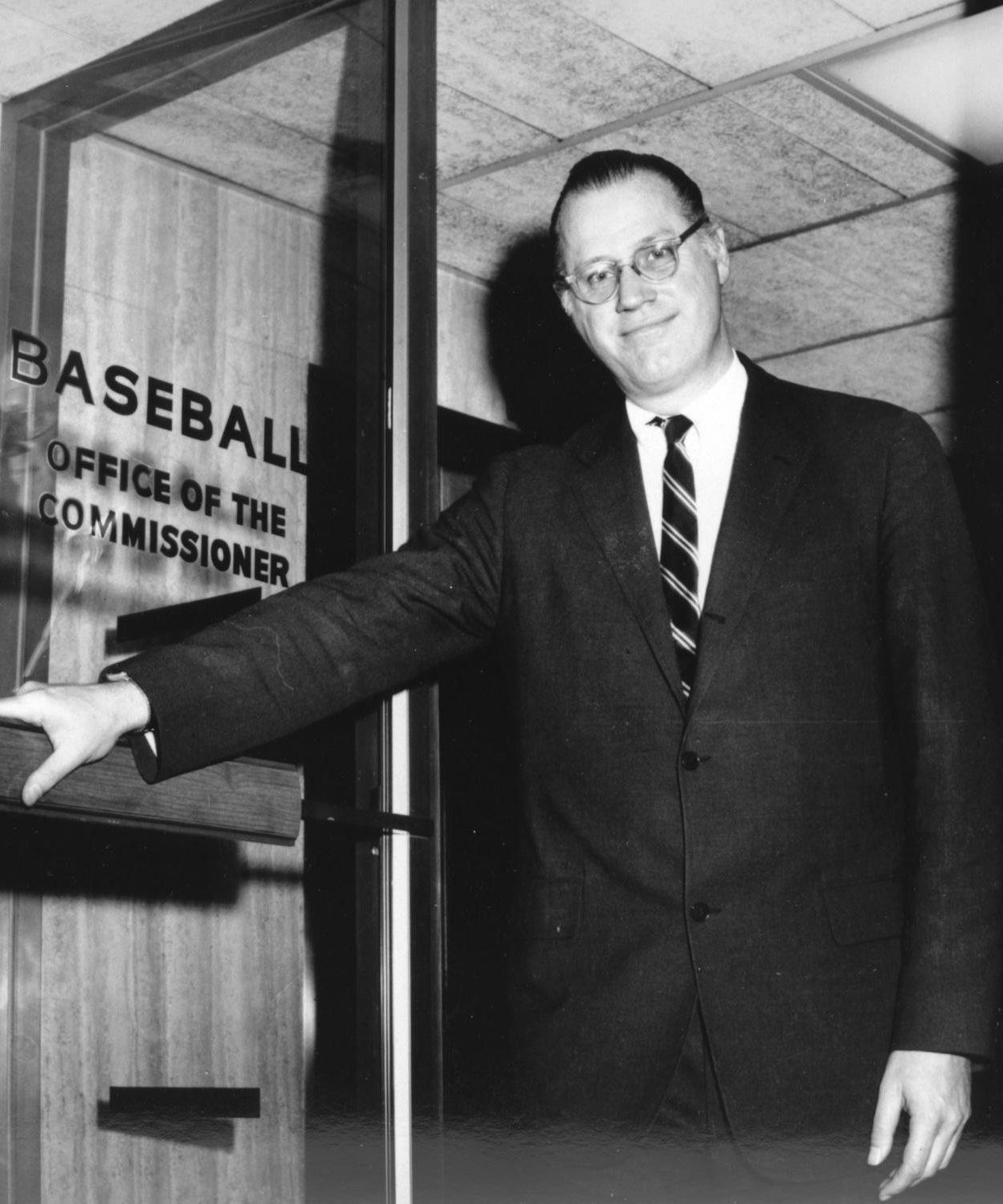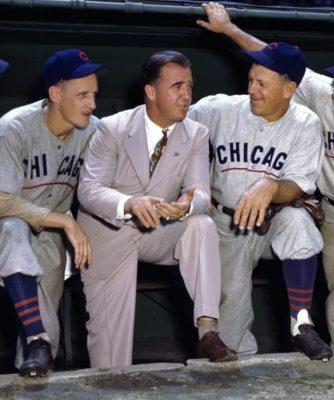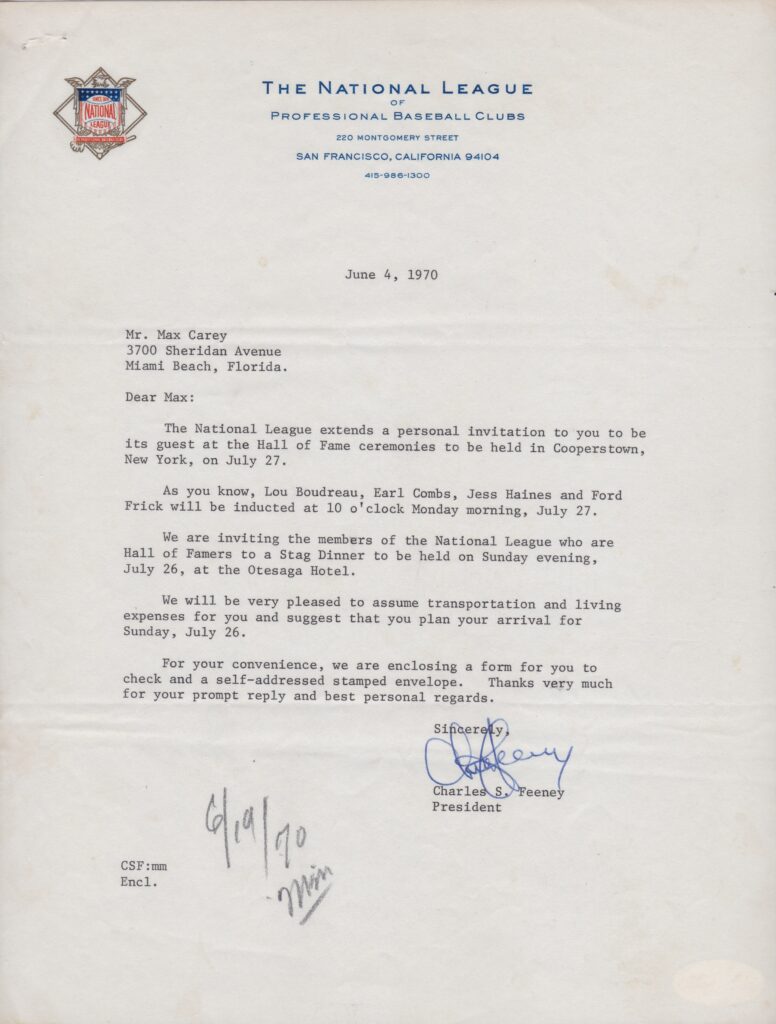
A sportswriter by trade, Ford Frick covered the Yankees for more than a decade. Along the way he was the ghostwriter for Babe Ruth in newspaper columns and for Babe Ruth’s Own Book of Baseball.
Everything changed for Frick in early 1934 when was hired to be the National League’s public relations director. Nice months after accepting the PR position, Frick was elected to replace the ailing John Heydler as president of the NL.
Frick was Senior Circuit’s boss until September 20, 1951 when he became commissioner. The Indiana native then spent 14 years as baseball’s chief.
Choosing a singular crowning achievement for Frick is difficult. He came up with the idea of the league awarding lifetime passes to it’s players, a practice still active today. His first dozen years as NL president came during the depression and World War II. Frick’s work at the time was instrumental in keeping teams from folding.
In 1947, Frick presided over the National League as Jackie Robinson broke the color barrier. When the Cardinals proposed a one-game boycott in protest of Robinson’s debut, Frick’s threat of a ban immediately ended the issue.
During his reign as commissioner, he guided baseball through the expansion of four teams. By negotiating favorable television contracts, he brought wealth and visibility to the game during a time of unprecedented growth.
Despite such accomplishments, many see Frick’s most indelible mark on the game as the father of the Hall of Fame.
Representatives of Cooperstown millionaire Stephan Clark contacted NL president Frick in hopes of generating publicity for a baseball celebration in upstate New York. Frick suggested opening a full-fledged museum.
Clark and Frick soon combined forces to make it a reality. In 1936 the Hall’s inaugural class was elected; three years later the National Baseball Hall of Fame and Museum opened its doors. The rest is history.
In recognition of Frick’s many accomplishments as a top baseball executive for 34 years, the Veterans Committee voted him a plaque in 1970. Murderers’ Row leadoff man Earle Combs, 1948 AL MVP Lou Boudreau, and Cardinals pitcher Jesse Haines joined Frick as inductees. Twenty-two Hall of Famers attended the July 27th ceremony as Frick received baseball’s highest honor.
In the collection is this letter inviting ten-time stolen base champ and Hall of Famer Max Carey to Frick’s induction. Written on ornate official National League letterhead, it is signed by then-NL president Chub Feeney.
Feeney invites Carey to the induction ceremony and also to a “Stag Dinner” for “members of the National League who are Hall of Famers.”
What a thrill it must’ve been for Frick to stand alongside the game’s greats as he was inducted into the institution he created. He no doubt attended the NL-only party, proud of his time as league president.
The relationship between Ford Frick and Cooperstown started in 1935. With Frick’s induction in 1970, the relationship is forever guaranteed.
